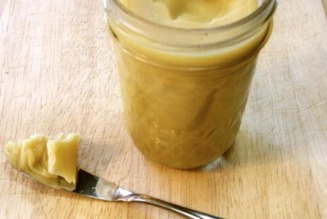The Six Tastes Of Food
Have you ever wondered why when we are sick we often lose our sense of taste and even have a diminished appetite? The science of Ayurveda explains an interesting relationship between taste, appetite, and the power of digestion. Often we simply connect tastes and flavor with enjoyment value rather than connecting tastes with its corresponding therapeutic value. Ayurveda has a simple yet elegant explanation for all of this and even provides a correlation which considers the natural order of these six tastes and the corresponding stages of digestion, as we shall discuss below.
The Six Tastes:
Although food should most certainly should be flavorful and delightful – we should also consider the therapeutic effects which food has upon both the body and mind. The six tastes that we will consider are the following:
1. sweet
2. sour
3. salty
4. pungent
5. bitter
6. astringent
1. SWEET TASTE – First Things First!
The first taste that should be consumed in a meal is the sweet taste such as rice, wheat, maize, etc. Ayurveda explains that sweet tastes helps to nourish the mucosal lining of the stomach as well as helps stimulate the gastric juices and digestive enzymes required for digesting the meal. In ancient days, providing something sweet first was a way of helping to promote the digestive strength in a more smooth and gentle fashion rather than shocking the system with other harsh flavors. Sweet considerations may include almonds, dates and raisins.
[[ Ancient Wisdom Regarding Astringent Taste ]]
“The sweet taste promotes the growth of all bodily tissues and Ojas [vital essence]. Aiding in longevity, it is soothing to the five sense organs and the mind, and gives strength and good complexion.”
– Charak Samhita
2. SOUR TASTE – The Second Taste
The next flavor which should be introduced into the meal is the sour taste with items such as pickles. The sour taste is thought to help further stimulate digestive juices [i.e. hydrochloric acid] from the lesser curvature of the stomach. From an energetic perspective we can think of sour as being heating and this “fire” element is what breaks up [i.e. digest] food with its hot and sharp qualities.
[[ Ancient Wisdom Regarding Astringent Taste ]]
“Sour taste improves the taste of food, enkindles the digestive fire, adds bulk to the body, invigorates, awakens the mind, gives firmness to the senses, increases strength, dispels intestinal gas and flatus, gives contentment to the heart, promotes salivation, aids swallowing, moistening and digestion of food. It is light, hot and wet.”
– Charak Samhita
3. SALTY TASTE – The Third Taste
The third taste which should introduced into the meal is the salty taste. From an energetic perspective, salty taste is made up predominately of fire and water elements which helps to secrete bile acids in order to further digest both protein and fat.
[[ Ancient Wisdom Regarding Salty Taste ]]
“Salty taste promotes digestion, is moistening, enkindles digestive fire; it is cutting, biting, sharp, fluid. Salty taste promotes salivation, liquifies mucus, cleanses the vessels, softens all the organs of the body, gives taste to food. It is heavy, oily and hot.”
4. PUNGENT TASTE – The Fourth Taste
The fourth taste which should be incorporated into the meal is the pungent taste. Pungent taste is thought to stimulate normal peristaltic movement within the gastrointestinal tract which is required to properly churn the ingested meal.
[[ Ancient Wisdom Regarding Pungent Taste ]]
“The pungent taste is cleansing to the mouth, enkindles the digestive fire, purifies food, promotes nasal secretions, causes tears and gives clarity to the senses. It helps to manage conditions of obesity, abdominal swelling and excessive liquid in the body.”
– Charak Samhita
5. BITTER TASTE – The Fifth Taste
The next taste to consider is bitter taste such as bitter green vegetables. Bitter taste is thought to stimulate the release of specialized enzymes within the jejunum and ileum in order to further digest food within the lower gut.
[[ Ancient Wisdom Regarding Bitter Taste ]]
“Bitter taste, though it does not taste good in itself, restores the sense of taste. It is detoxifying, antibacterial, germicidal, and kills worms. Bitter taste creates tightness of the skin and muscles. It kindles the digestive fire, promotes digestion of toxins and helps scrape away fat. It is dry, cold and light.”
– Charak Samhita
6. ASTRINGENT TASTE – The Sixth Taste
Finally, the meal should end with the astringent taste. This is the reason why most indian meals end with a cup of lassi. Lassi is freshly prepared butter milk or yogurt and is often mixed with water and a pinch of roasted cumin powder.
[[ Ancient Wisdom Regarding Astringent Taste ]]
“Astringent taste is drying, firming, contracting. Astringent taste promotes absorption of bodily fluids; it is dry, cooling and light.”
– Charak Samhita
5 QUICK TIPS TO AID DIGESTION:
Although we have discussed the relationship of tastes to the power of digestion – we will conclude with a few tips to help aid digestion.
1. Before each meal, consider eating 1/2 teaspoon of grated fresh ginger root with a pinch of rock salt and a squeeze of lime juice. This will help to stimulate the digestive fire [“agni”] which will then help increase the secretion of digestive juices.
2. Consider adding small amounts of ghee [clarified butter] to the meal which will increase the digestive fire [“agni”] and help improve digestion.
3. Having a small quantity of pickle with a meal, such as lime or mango pickle will also help to improve digestion.
4. After having completed the meal, consider chewing a teaspoon of roasted fennel seeds, mixed with roasted dhanyaka daal as this will help with digestion.
5. As mentioned above, consider having a cup of lassi at the end of the meal as the astringent flavor will help complete the digestive process. You can make lassi by blending about 1/4 cup of fresh yogurt [yogurt not cold; rather room temperature] into a cup of water and then adding two pinches of ginger and cumin powder.



![Female Health: Amenorrhea [cessation of menses] – An Ayurvedic Perspective](https://healthyayurveda.com/wp-content/uploads/2015/07/1.-Amenorhea--327x219.png)




